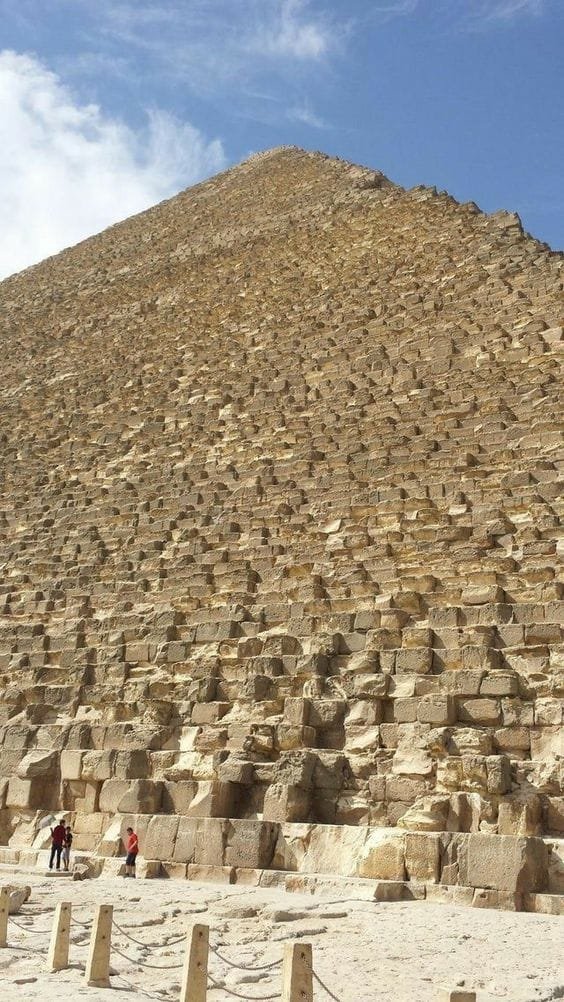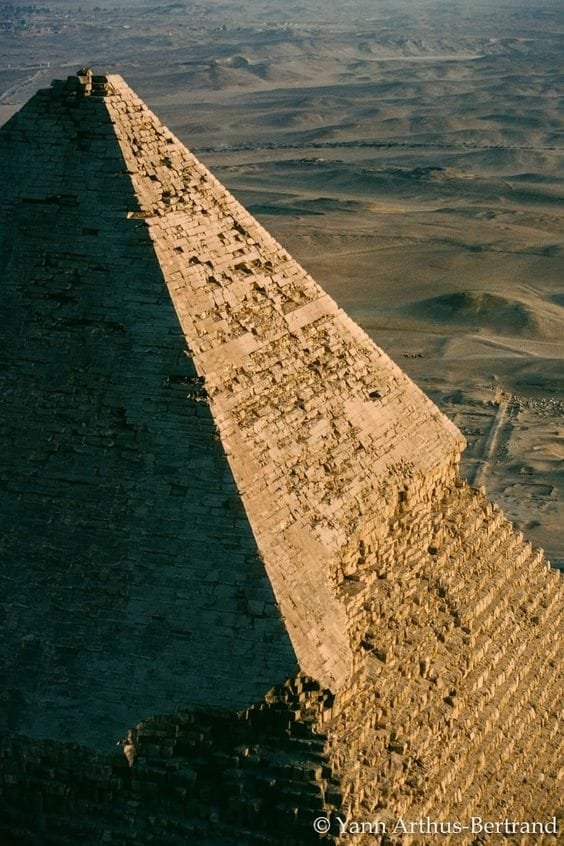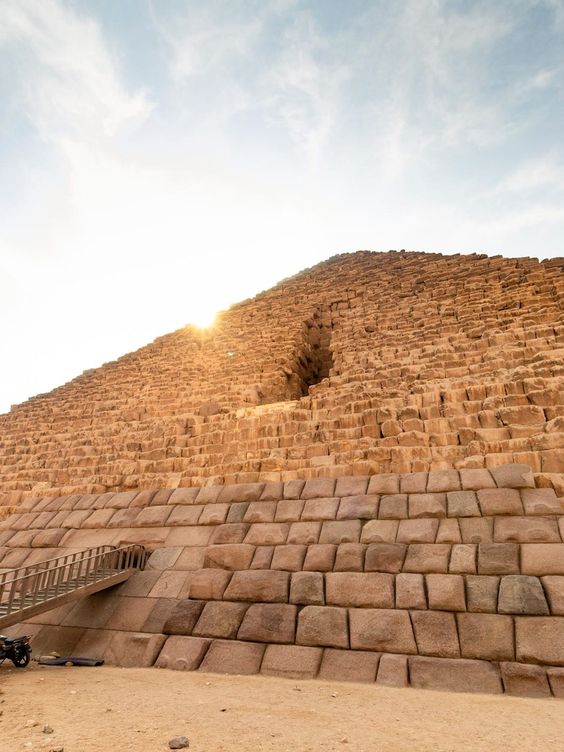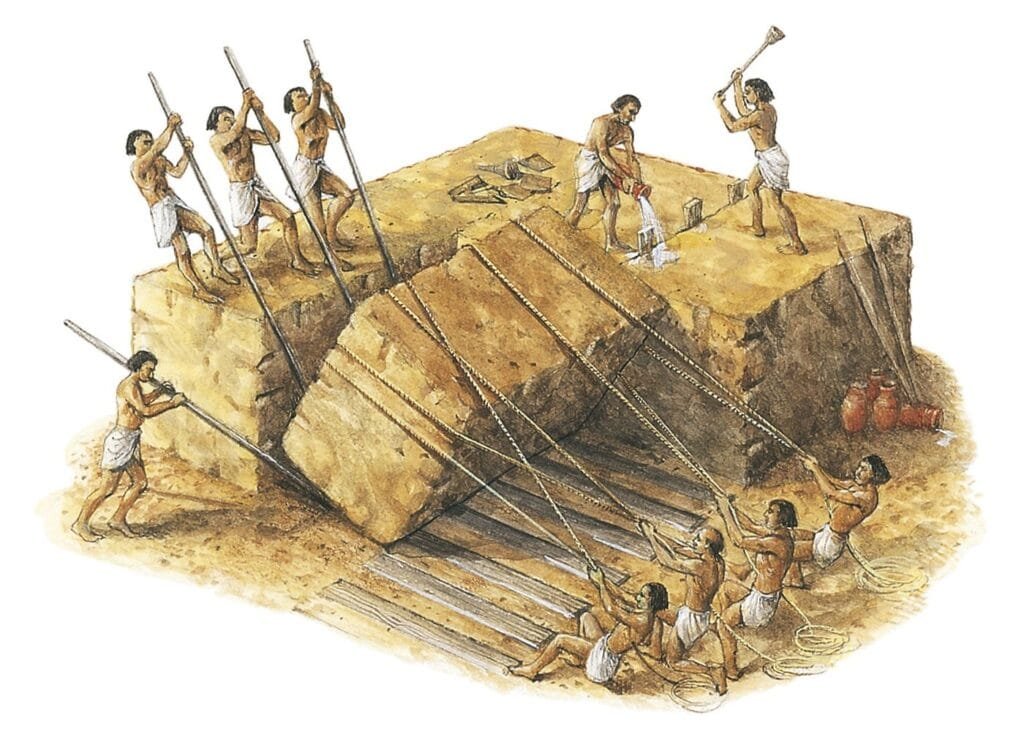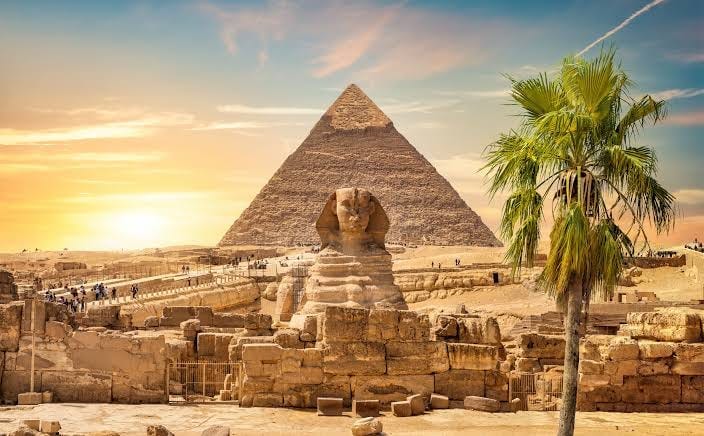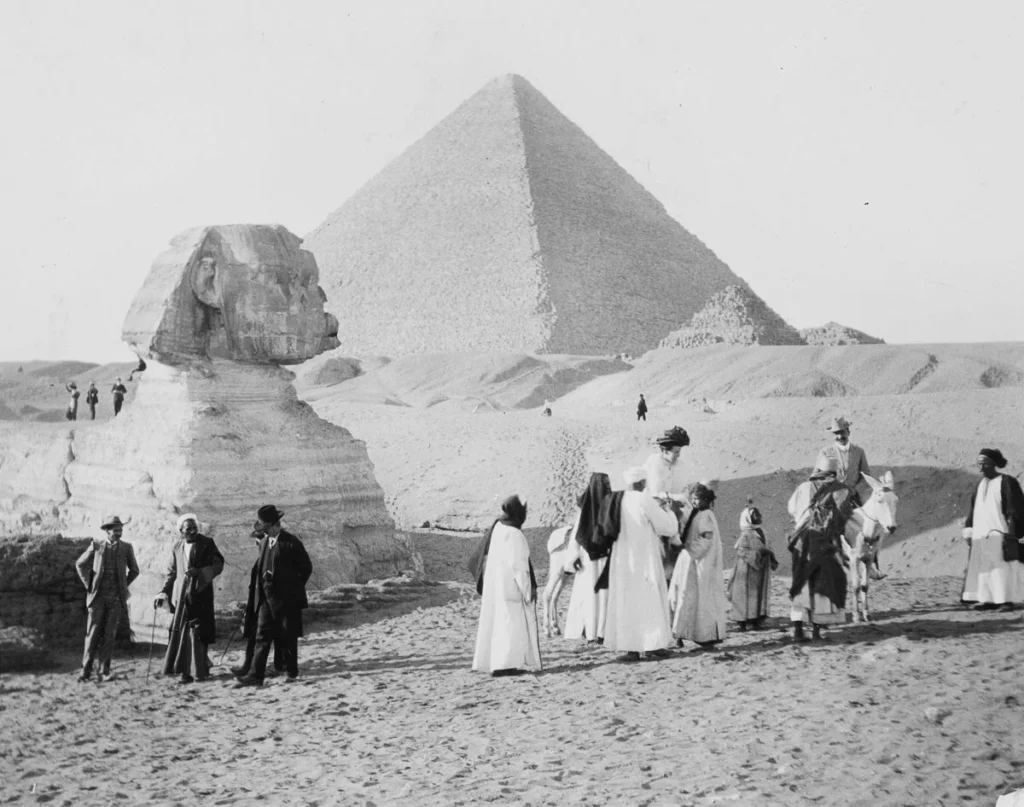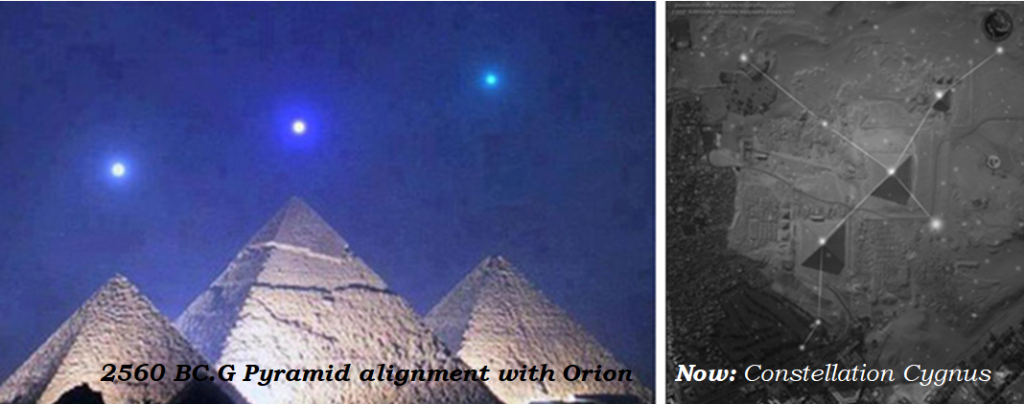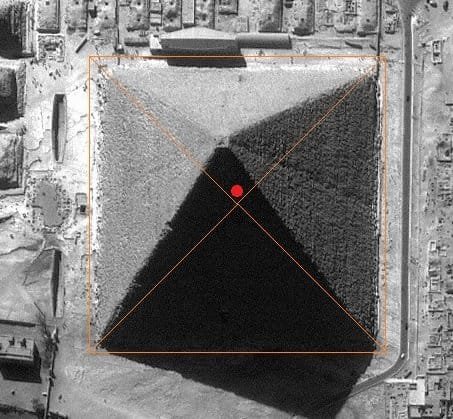The Great Pyramids of Giza are perhaps the most iconic and enduring symbols of Ancient Egypt. Located on the Giza Plateau, just outside of modern Cairo, these magnificent structures were constructed over 4,500 years ago during the Fourth Dynasty of Egypt’s Old Kingdom, around 2580–2500 BCE. The three pyramids—Khufu, Khafre, and Menkaure—were built as elaborate tombs for the pharaohs, each designed to ensure their safe passage to the afterlife. The largest of the three, the Great Pyramid of Khufu, was once the tallest man-made structure on Earth, standing at 146.6 meters (481 feet). The pyramids were originally covered in smooth limestone casing stones, which reflected the sun’s light, making them shimmer in the desert sunlight, and adding to their grandeur. Though much of the outer casing has eroded over the centuries, the core structure remains intact, continuing to impress visitors today. These massive structures are not only remarkable for their size and architectural precision but also for their cultural and religious significance. The pyramids were designed to symbolize the pharaoh’s divine status and his journey to the afterlife. In addition to the pyramids themselves, the surrounding complex includes temples, causeways, and smaller pyramids for queens and royal family members. As a result, the Great Pyramids of Giza stand as a monumental legacy of Ancient Egypt’s architectural brilliance, religious beliefs, and cultural achievements, attracting millions of tourists and scholars alike every year.
Egypt Tour Magic
Each tour type can be adjusted in terms of duration, activities, and accommodations to best meet the needs and interests of your clients.
About Us
Embark on a journey with Egypt Tour Magic and discover the magic of Egypt like never before …
Our Services
Discover the magic of Egypt with Egypt Tour Magic, where every detail is taken care of to ensure..
Our Team
At Egypt Tour Magic, our dedicated team is passionate about creating unforgettable travel experiences....
Refund and Returns Policy
At Egypt Tour Magic, we strive to provide exceptional travel experiences. However ..
Contact Us
We’re here to help you with any questions or to assist you in planning your next ..
Egypt Tour Magic
Explore More About Us


